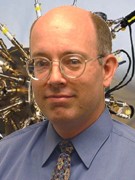|
 |
 |
|

Technical
Seminar |
 |
 |
|
|
|
Optical Interconnects for Commercial CMOS
|
|
|
DATE/TIME
Friday, September 2, 2005
(10:30am to 11:30am)
|
|
PLACE
Bldg. 1 WLL2/3 (Agilent Technologies,
Fort Collins, CO)
|
|
DIRECTIONS
|
|
Non-Agilent
Attendees: Please arrive punctually at 10:15am as you will
need to be escorted to the seminar
room. RSVP to
susan_hunter@agilent.com
to expedite sign-in and to help us with a headcount estimate for
food/drinks. |
|
From I-25, take Harmony Road Exit (Exit
265) westbound, and enter Agilent/HP campus on right. Agilent/HP
campus is on the NE corner of Harmony Road and Ziegler Road.
Proceed to Bldg. 1 Lobby to sign-in and meet host for escort to
Auditorium. |
|
COST
Free. Donuts &
drinks will be provided.
|
|
|
ABSTRACT
|
|
On-chip signaling limitations as well as
direct optical network connections to integrated circuits motivate the
integration of optoelectronics with silicon chips. A Colorado State
University - Agilent collaborative project has been investigating the
implementation of optical waveguides and photodetectors in commercial
CMOS for on-chip clock distribution. Leaky-mode coupled,
metal-semiconductor-metal silicon photodiodes have been designed,
fabricated in a 0.35 um CMOS process at Agilent, and are being
characterized. A waveguide based H-tree distribution system for the
optical clock signal has also been fabricated on the same chip and
evaluated. This talk will present the concepts and report on the
initial results from the first generation chip. It will also address
some general issues relating to silicon optoelectronics including the
tradeoffs in hybrid vs. monolithic approaches, operating wavelengths and
related materials implications, and the quest for silicon based light
sources. |
|
PRESENTATION SLIDES
pdf |
|
|
PROF.
KEVIN
LEAR (Colorado State
University, Fort Collins, CO)
|
 |
Kevin Lear is the Rockwell Anderson Associate
Professor of Electrical and Computer Engineering at Colorado State
University. He received the BSEE degree from the University of
Colorado, Boulder, CO, and the MSEE and PhDEE degrees from
Stanford University, Stanford, CA, where he was an Office of Naval
Research Fellow. Upon graduation in 1990, he joined Sandia National
Laboratories in Albuquerque, NM, as Senior Member of Technical Staff.
His research in vertical cavity surface emitting lasers at Sandia led to
performance benchmarks for efficiency and speed, a number of related
patents, and recognition with an IEEE LEOS Distinguished Lecturer Award.
He left Sandia in 1997 to pursue the commercialization of this
technology as the Chief Scientific Officer for MicroOptical Devices
(MODE), which was subsequently acquired by Emcore Corporation.
Most recently, he took a faculty position at Colorado State University
in 1999 where he currently has research activities in optoelectronic
devices and related applications to fiber optic communications and
biosensors. He serves as a consultant and advisory board member for a
number of high technology companies. |
|
Website |
|
|
|